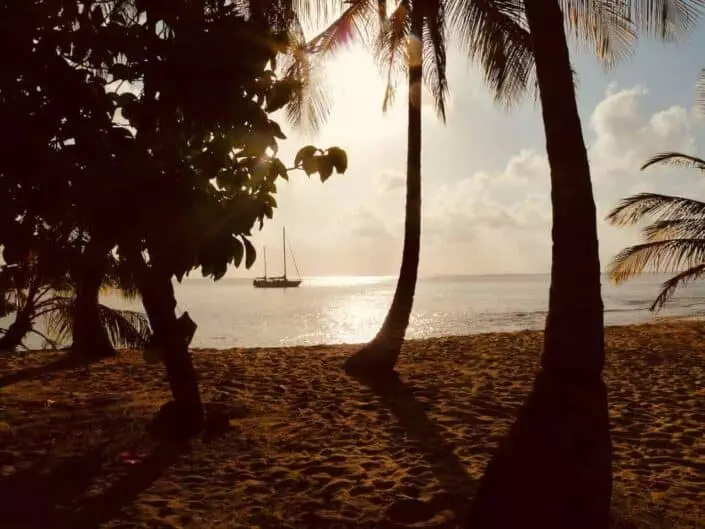Table of Contents
Ecotourism is nowadays seen by many as the most promising type of tourism, but it’s more than just a trend; it’s a commitment to travel in a way that respects nature, preserves the environment, and supports local communities.
More than ever, travelers are searching for destinations that offer both breathtaking natural beauty and a rich tapestry of culture. With that in mind, let’s explore five captivating cultural ecotourism destinations that appeal to conscious and sophisticated travelers.
Bhutan: the last Shangri-La
Deep within the majestic folds of the Himalayas lies Bhutan, a country often referred to as the ‘Last Shangri-La’. Its commitment to Gross National Happiness over Gross Domestic Product has sculpted a unique blend of modernity and tradition.
As the world’s only carbon-negative nation, Bhutan’s respect for nature is a way of life. Visitors to Bhutan are often struck by the intricately designed dzongs (fortresses) that merge seamlessly with the natural landscape, each bearing silent testimony to the nation’s rich cultural tapestry.
Moreover, Bhutan’s commitment to sustainable tourism ensures that while visitors get an authentic experience, the impact on the environment and local communities is minimal, making it a truly green haven.

San Blas Islands, Panama: Archipelago of culture and coral
The San Blas Islands are a constellation of over 365 coral atolls sprinkled across the Caribbean Sea. But more than their pristine beaches and turquoise waters, what sets these islands apart is their custodians—the indigenous Guna Yala people.
With a matriarchal society and a deep reverence for nature, the Guna Yala have preserved their cultural heritage amidst the changing tides of time. Their traditional dugout canoes glide silently over crystal-clear waters as the islanders move between the islets, practicing age-old fishing techniques.
Each island has its own rhythm and rituals, from community gatherings under centuries-old trees to ceremonies that mark the milestones of life. Eco initiatives on the islands are largely community-driven. As global attention shifts towards sustainable living, the Guna Yala’s organic, nature-intertwined lifestyle serves as a guide on how to get your life into balance.

Jordan: where ancient stones speak
Jordan, a land of haunting beauty and timeless landscapes, effortlessly merges its rich historical tapestry with a commitment to ecological sustainability, which makes it a must-visit ecotourism destination. As highlighted by renowned Samer Anis Mansour Mouasher, the Discovery Eco Tourism Chairman and CEO, the nation’s enormous ecotourism potential is undeniable and intrinsic to its charm.
The ancient city of Petra, known as the “Rose City” because of its unique rose-hued rock formations, remains a marvel of engineering and artistry. Its stone-carved facades, like the famed Treasury and Monastery, evoke tales of the Nabateans, an ancient Arab civilization that once flourished in these arid landscapes.
Not to be overshadowed, the Dead Sea, lying at the lowest point on Earth, offers therapeutic mud and saline waters that have drawn visitors for centuries.
Further showcasing its dedication to ecotourism, the Dana Biosphere Reserve in central Jordan stands out as a home to a variety of plant species and rare animals, making it a paradise for nature enthusiasts and researchers alike.
Maasai Mara, Kenya: the Dance of wildlife and tradition
The Maasai Mara is not just another wildlife reserve; it’s a living testament to Africa’s vibrant pulse, where the rhythms of nature and age-old traditions come alive. Beyond the dramatic spectacle of the Great Migration or the pursuit of spotting the Big Five, it’s the Maasai people and their coexistence with the wild that adds a deeper layer of richness to the Mara experience.
In the vast expanses of this savannah, Maasai warriors, or ‘Morans’, can often be seen donning their iconic red shukas and intricate beadwork, herding cattle, and sharing stories of their ancestors.
Visitors are welcomed into manyattas (traditional Maasai villages) where they can experience the tribe’s rich oral tradition, dance rituals, and vibrant community life. Several community-run conservancies in the Mara region promote ecotourism.

Sacred Valley, Peru: in the shadow of the Incan sun
The Sacred Valley of Peru is a mosaic of life, culture, and history, nestled in the embrace of the towering Andes. This valley, once the heartland of the Incan empire, is more than just a path to the famed ruins of Machu Picchu. With terraced hillsides that mirror giant staircases, ancient agricultural practices still thrive here.
The Quechua communities, descendants of the Incas, carry forward time-honored traditions, from textile weaving using natural dyes to the cultivation of native crops like quinoa and maize. Community-led tourism initiatives in the Sacred Valley enable visitors to delve deeper into Quechua life.
Whether it’s participating in a traditional Pachamanca feast or learning the intricate patterns of Andean weaving, these interactions ensure a sustainable approach to tourism, bridging the past with the present while looking towards a harmonious future.
In an age where the impact of our travels really matters, these destinations stand for their beauty and majesty. Cultural ecotourism is more than mere sightseeing; it’s about deepening our understanding, enriching our souls, and ensuring that the wonders we cherish today endure for generations to come.
Make your next journey one that celebrates and sustains the delicate dance of nature and culture.


